How I repaired the laptop battery
After my post with a story about my small collection of laptops , thanks to our regiment's habrechelovek McStrauth arrived - a very interesting copy appeared in my collection - the 1995 Micron TransPort XKE, a very charismatic and interesting laptop, I have to say, but it had a problem - absolutely dead battery. All my attempts to “shake” him were not crowned with success, and it was decided to disassemble it and try to repair it. It is said - done, the battery is disassembled, and a depressing picture appeared before my eyes:
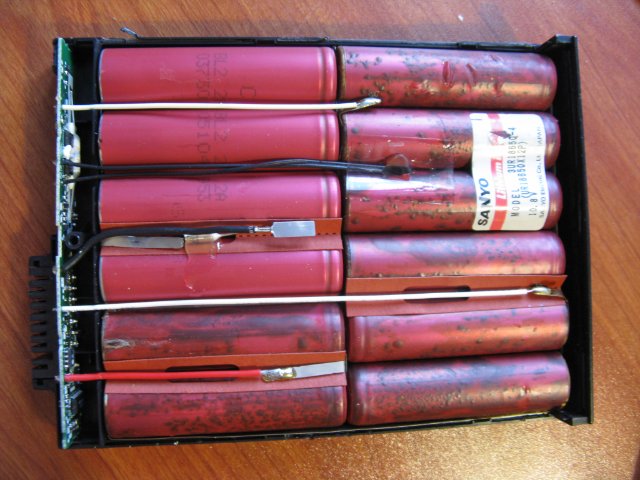
What happened next? (caution - traffic)
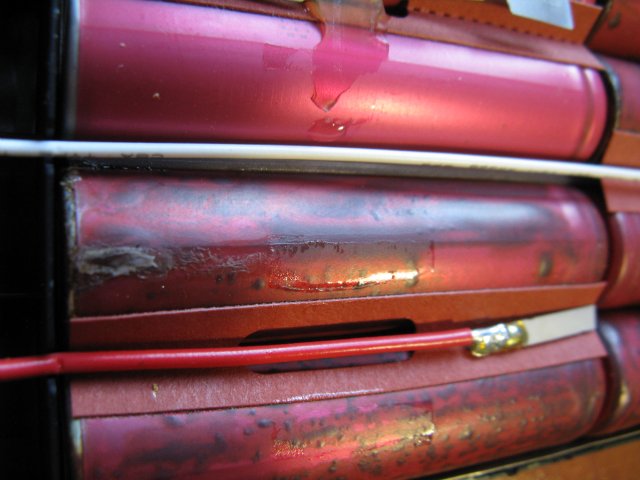
Banks began to flow, voltage measurements showed that two-thirds of the cans are dead.
Along the way, I had to solve a puzzle, and draw up a schematic diagram of the connection of the battery cans (I quote a photo of a special draft, which always lies under the keyboard for urgent recordings):
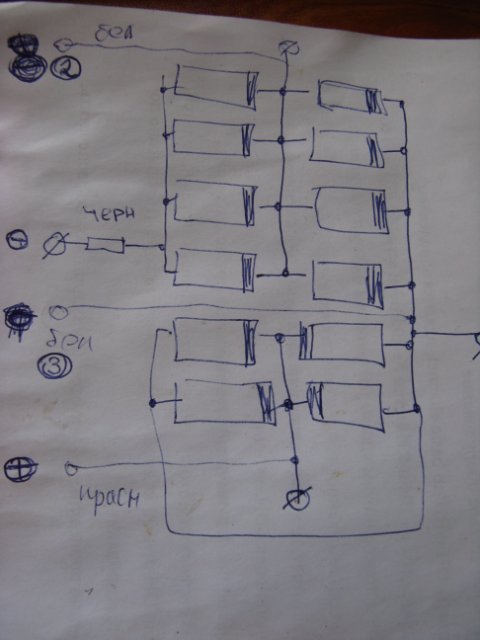
The scheme was simplified and it became clear that the battery consists of 3 consecutively connected blocks of 4 elements each:
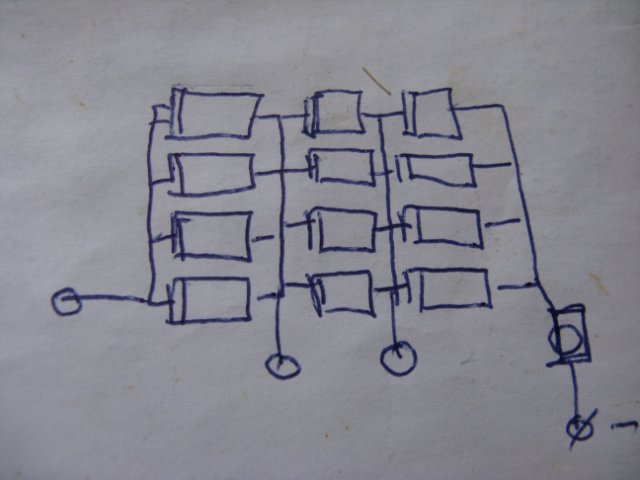
But where our not disappeared! My opinion fell on a battery from a ThinkPad t60 with a dead controller and quite lively elements, the autopsy showed that there are the same 3 cans of blocks, but only 3 elements each, the voltage was similar, IBM's battery capacity was larger, well - worse will not be. The elements were disassembled and soldered again in the form that would fit in the case of the battery.
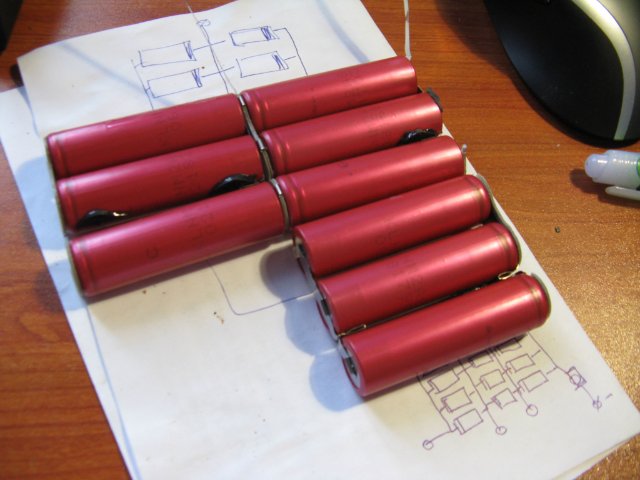
Attention! It is necessary to work with banks extremely carefully so as not to arrange a short circuit and not to overheat the bank.
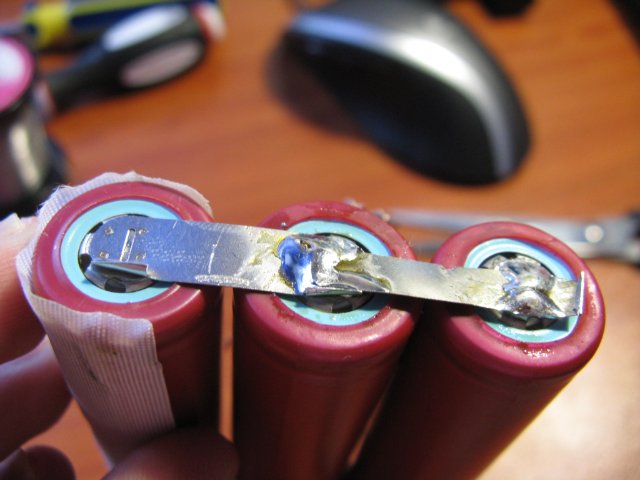
Trial testing showed that the laptop from this design starts. Joy knew no bounds, but it was here that the first trouble waited for me, the banks from ThinkPad were a bit thicker and longer than the relatives, so I had to rework the arrangement of elements in the case and process the file itself, and with grief in half the banks fell into place:
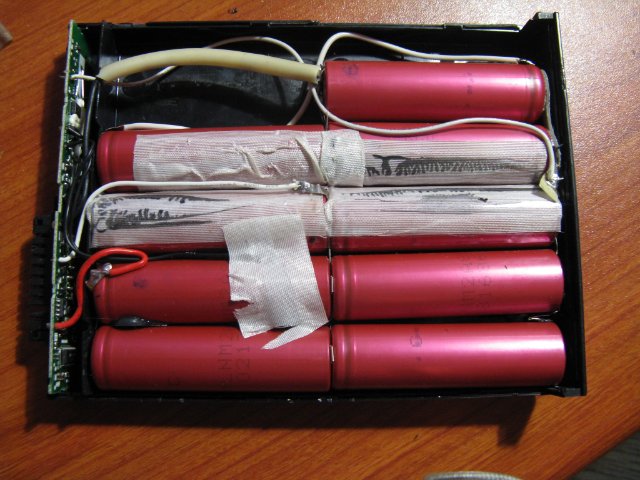
Everything was neatly soldered, checking the battery showed that the banks were working.
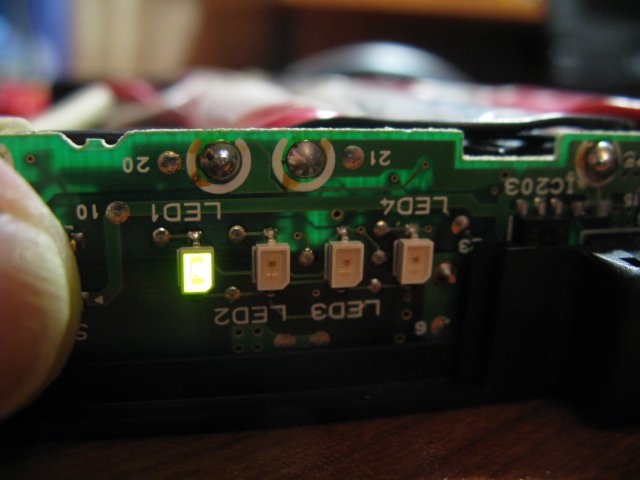
But when it was decided to pack the battery back, the problem of the dimensions of the cans resurfaced - the lid was closed only under load, and therefore for gluing with superglue such a cocoon was made, and left for a few hours (perhaps I’ll omit the story of watch dances around the battery with the file, matyuk and insulating tape. important is the fact that the lid is closed):
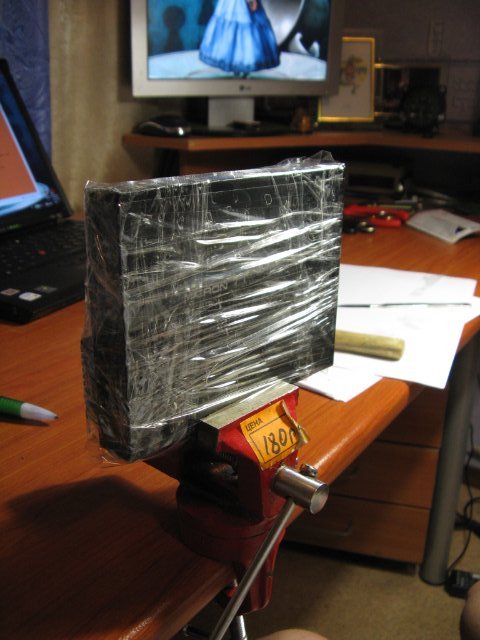
Next, the seams were smoothed with sandpaper, and as a result I got a monolithic construction with very good gluing seams for the first blister:
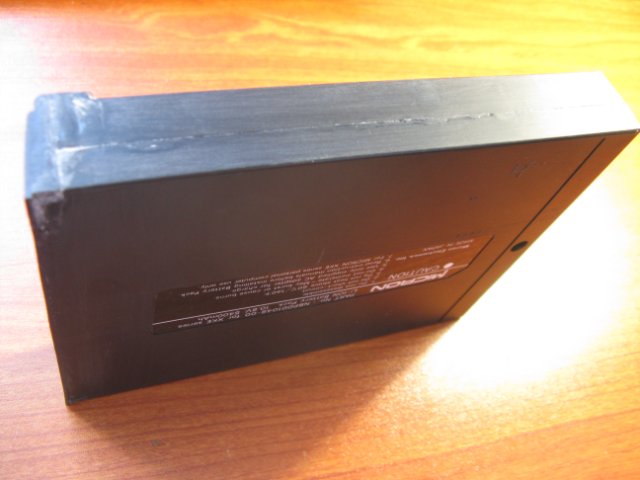

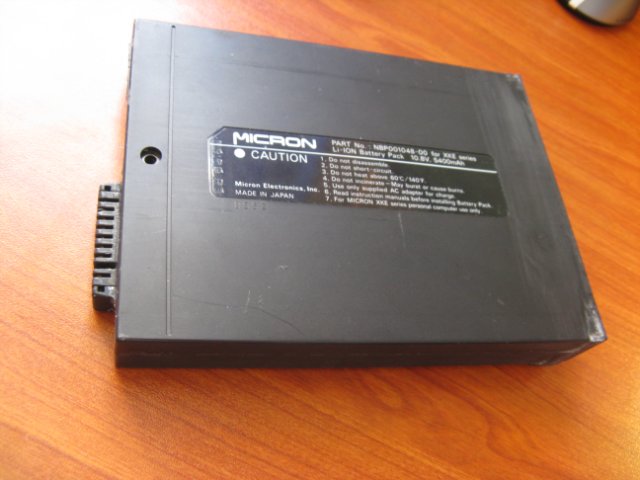
')
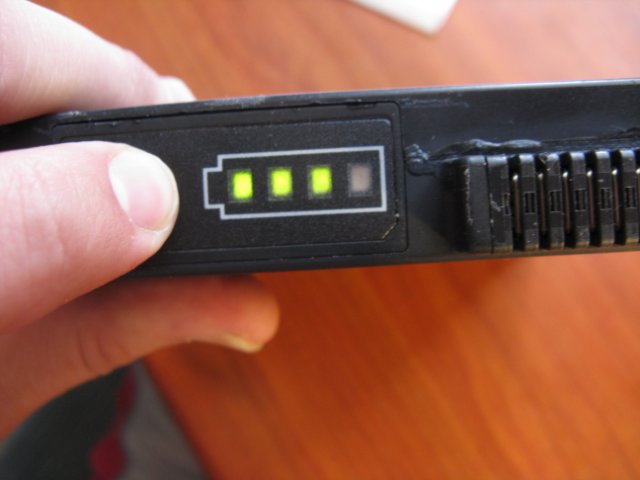
The battery fell into place like a glove, the test run was successful. Practice has shown that the lifetime of the restored battery is about 4 hours (I’ll test it more when reviewing the laptop next time)
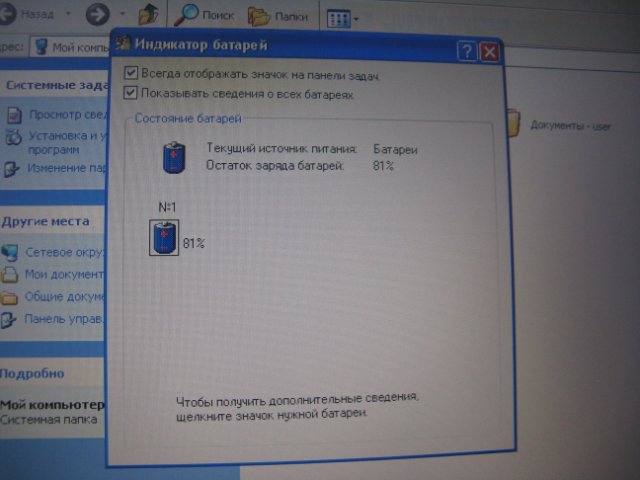
By the way, banks under your voltage, capacity, sizeand color, you can buy new ones. The price will still be cheaper than a new battery.
And I repeat once again - with these works, you must be careful and TB, as well as carefully examine the parameters of the cans and the connection scheme, so as not to nakosyachit and burn the controller.
And at the end a special thank you to McStrauth , thanks to which this beast now lives with me (I don’t post a general photo on purpose in order to leave material for the subsequent detailed and interesting review of this device).

What happened next? (caution - traffic)

Banks began to flow, voltage measurements showed that two-thirds of the cans are dead.
Along the way, I had to solve a puzzle, and draw up a schematic diagram of the connection of the battery cans (I quote a photo of a special draft, which always lies under the keyboard for urgent recordings):

The scheme was simplified and it became clear that the battery consists of 3 consecutively connected blocks of 4 elements each:

But where our not disappeared! My opinion fell on a battery from a ThinkPad t60 with a dead controller and quite lively elements, the autopsy showed that there are the same 3 cans of blocks, but only 3 elements each, the voltage was similar, IBM's battery capacity was larger, well - worse will not be. The elements were disassembled and soldered again in the form that would fit in the case of the battery.

Attention! It is necessary to work with banks extremely carefully so as not to arrange a short circuit and not to overheat the bank.

Trial testing showed that the laptop from this design starts. Joy knew no bounds, but it was here that the first trouble waited for me, the banks from ThinkPad were a bit thicker and longer than the relatives, so I had to rework the arrangement of elements in the case and process the file itself, and with grief in half the banks fell into place:

Everything was neatly soldered, checking the battery showed that the banks were working.

But when it was decided to pack the battery back, the problem of the dimensions of the cans resurfaced - the lid was closed only under load, and therefore for gluing with superglue such a cocoon was made, and left for a few hours (perhaps I’ll omit the story of watch dances around the battery with the file, matyuk and insulating tape. important is the fact that the lid is closed):

Next, the seams were smoothed with sandpaper, and as a result I got a monolithic construction with very good gluing seams for the first blister:



')

The battery fell into place like a glove, the test run was successful. Practice has shown that the lifetime of the restored battery is about 4 hours (I’ll test it more when reviewing the laptop next time)

By the way, banks under your voltage, capacity, size
And I repeat once again - with these works, you must be careful and TB, as well as carefully examine the parameters of the cans and the connection scheme, so as not to nakosyachit and burn the controller.
And at the end a special thank you to McStrauth , thanks to which this beast now lives with me (I don’t post a general photo on purpose in order to leave material for the subsequent detailed and interesting review of this device).
Source: https://habr.com/ru/post/95631/
All Articles